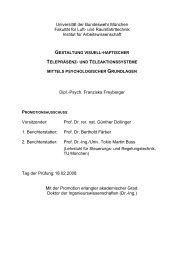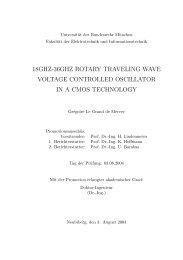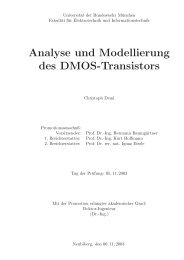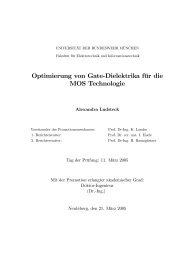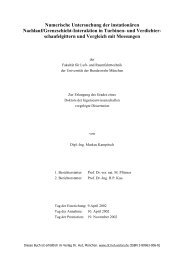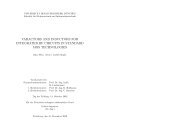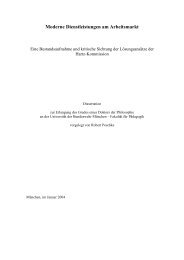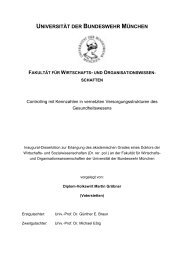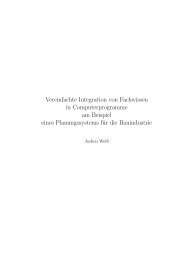Precise Orbit Determination of Global Navigation Satellite System of ...
Precise Orbit Determination of Global Navigation Satellite System of ...
Precise Orbit Determination of Global Navigation Satellite System of ...
Create successful ePaper yourself
Turn your PDF publications into a flip-book with our unique Google optimized e-Paper software.
Chapter 8 Geostationary <strong>Orbit</strong> <strong>Determination</strong> And Prediction During <strong>Satellite</strong> Maneuvers<br />
Changes <strong>of</strong> Omega (arc_sec)<br />
Changes <strong>of</strong> i (arc_sec)<br />
8<br />
6<br />
4<br />
2<br />
0<br />
0 20 40 60 80 100 120 140 160 180 200 220 240 260 280 300 320 340 360<br />
-2<br />
-4<br />
-6<br />
-8<br />
0<br />
-5<br />
-10<br />
-15<br />
-20<br />
-25<br />
-30<br />
Sun/Moon Positions (deg)<br />
Figure 8-2 Secular Variations <strong>of</strong> Inclination <strong>of</strong> GEO <strong>Satellite</strong> due to Sun/Moon Position Changing<br />
0 20 40 60 80 100 120 140 160 180 200 220 240 260 280 300 320 340 360<br />
Sun/Moon Positions (deg)<br />
Figure 8-3 Secular Variations <strong>of</strong> Longitude <strong>of</strong> Ascending Node <strong>of</strong> GEO <strong>Satellite</strong> due to Sun/Moon Position Changes<br />
Figure 8-2 and Figure 8-3 show that the gravitational attractions <strong>of</strong> the Sun and the Moon pull the geostationary<br />
satellites out <strong>of</strong> equatorial orbit plane, gradually increasing satellite’s orbital inclination. In addition, the<br />
noncircular shape <strong>of</strong> the earth’s equator causes these satellites to be slowly driven to one <strong>of</strong> two stable<br />
equilibrium points along the equator, resulting in an east-west liberation (drifting back and forth) about these<br />
points.<br />
The secular variation from the Moon attraction is about twice as strong as from the Sun’s attraction. This is<br />
because the distance from the Sun is much larger than the Moon and the attraction from the Sun decreases with<br />
the cube <strong>of</strong> the distance from the Sun to the Earth. For the secular variation <strong>of</strong> inclination i from the Sun<br />
attraction, the maximum variations will be reached four times each year, two times for positive changes and two<br />
times for negative changes. For the secular variation <strong>of</strong> inclination i from the Moon attraction, the maximum<br />
variations will be reached four times each lunar month, also two times for positive changes and two times for<br />
negative changes. For the secular variation <strong>of</strong> the longitude <strong>of</strong> the ascending node, Ω, from the Sun attraction,<br />
the maximum variations occur at midsummer and midwinter. At the beginning <strong>of</strong> spring and autumn, the secular<br />
variation <strong>of</strong> Ω is zero. The effect <strong>of</strong> the lunar perturbation on the orbital inclination is the same as that <strong>of</strong> the<br />
solar perturbation. The variations are maximum twice per lunar month and passes through zero in between.<br />
Due to non-spherical geopotential gravitation, the Sun and the Moon attractions, the inclination and longitude <strong>of</strong><br />
the ascending node <strong>of</strong> the geostationary satellite will gradually drift away from the original position.<br />
103<br />
Sun<br />
Moon<br />
Sun<br />
Moon



